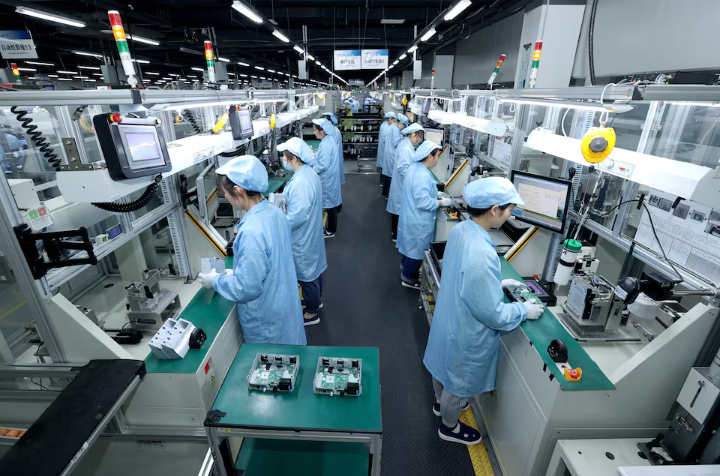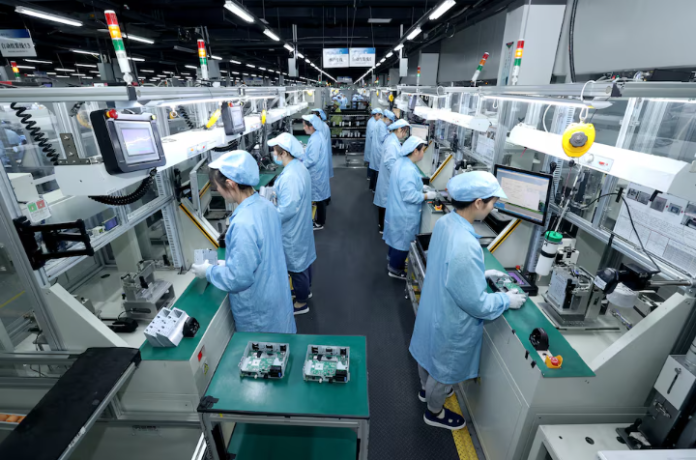China’s manufacturing sector just took a major blow—and Donald Trump’s new wave of tariffs is largely to blame. In April 2025, factory activity in the world’s second-largest economy shrank at its fastest pace in over a year, signaling trouble for a recovery that had only just begun gaining traction.
Fresh data from China’s National Bureau of Statistics (NBS) shows the official manufacturing Purchasing Managers’ Index (PMI) fell to 49.0 in April, down from 50.5 in March. This marks the lowest point since December 2023 and falls below the key 50-point mark that separates growth from contraction. The sharp downturn surprised analysts, who had forecasted a more moderate drop to 49.8.
Even non-manufacturing sectors—which include services and construction—showed signs of weakness, with their PMI dipping to 50.4 from 50.8. Though still technically in growth territory, the slower momentum underscores growing concerns about China’s economic resilience.
What triggered this sudden drop? According to experts, it’s the impact of former U.S. President Donald Trump’s “Liberation Day” tariff package. These steep import duties, which include a 145% levy on certain Chinese goods, have made it significantly harder for Chinese manufacturers to sell overseas—especially to their biggest customer, the U.S.
In the months before the tariffs hit, Chinese exporters rushed to ship out goods early in a strategy known as front-loading. Now that the tariffs are in effect, that approach has run its course. Without new international demand to lean on, China’s export-heavy economy is feeling the heat.
“While the data may slightly exaggerate the impact due to negative sentiment, there’s no denying the pressure on China’s economy,” said Zichun Huang, China Economist at Capital Economics. He predicted that even with increased government spending, growth could slow to just 3.5% this year.
Adding to the gloom, the new export orders index—a key indicator of future demand—fell to its lowest level since April 2012, excluding the pandemic years. This signals not just a temporary slowdown, but a potential long-term shift in global trade dynamics.

Beijing is taking steps to soften the blow. Officials are preparing new economic stimulus policies, including possible interest rate cuts and reduced bank reserve requirements. While Chinese leaders have dismissed the idea of negotiating with the U.S. over tariffs, they are clearly aware of the need to support affected industries and workers.
Some analysts expect the manufacturing index to remain in contraction territory in May, though slight improvements may come as new domestic policies take effect. Still, the outlook remains cautious.
International bodies like the IMF and financial giants including Goldman Sachs and UBS have all lowered their growth forecasts for China through 2026. While the Chinese government is holding firm on its 5% growth target for 2025, reaching that goal is looking more and more uncertain.
As the ripple effects of this trade standoff spread, the global economy is watching closely. If tensions escalate further, the world could be heading toward a new era of economic nationalism—and more instability ahead.



